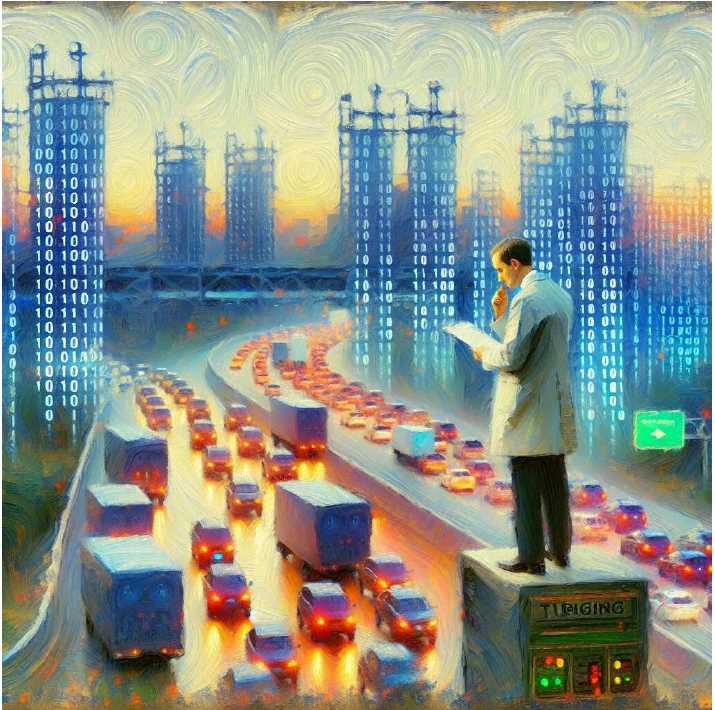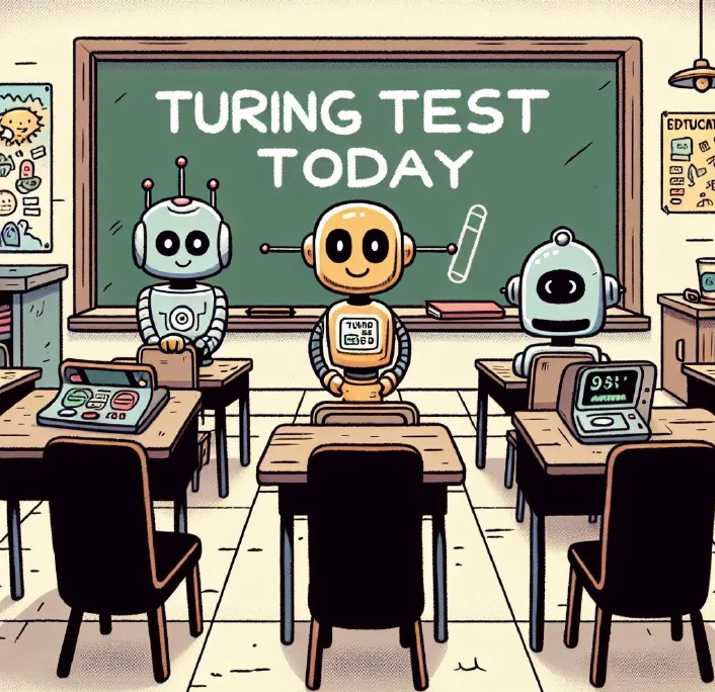| Mapping, GIS, & Transportation Software Solutions |
| Mapping, GIS, & Transportation Software Solutions |
Caliper Transportation Blog

Author:
Wuping Xin

Image generated by A.I.
“This above all: to thine own self be true, And it must follow, as the night the day, Thou canst not then be false to any man.”
Hamlet, Shakespeare
When Alan Turing introduced his eponymous test in 1950, the idea was simple: if a machine could carry on a conversation indistinguishable from that of a human, then it could be said to "think." Turing's brilliance lay not in how he defined intelligence, but how he sidestepped the definition entirely—focusing instead on behavioral equivalence.
Fast forward to today, and we might ask a parallel question in traffic engineering: Can a digital twin of a traffic signal control system behave in such a way that no other system—human or machine—can tell it apart from the real thing?
This is not a rhetorical question. As simulation and digital twin technologies mature, the need for a test of authenticity—a Turing Test for traffic signal digital twins—is becoming increasingly relevant.
To qualify as a high-fidelity digital twin of a traffic signal control system, it probably needs to satisfy two fundamental criteria:
The digital twin must expose the same interfaces as the real-world traffic signal system. This includes:
Any system — central traffic management software, hardware-in-the-loop (HIL) testbeds, cabinet I/O testers, BIM, anything, everything — should be able to interact with the digital twin exactly as it would with a physical one. Everyone believes everyone else in the loop is real, authentic, and prepared. If it can't tell the difference, the first part of the test is passed.
A digital twin is not about looking like reality — it is about acting like it.
This ability to preserve fidelity across time domains is what separates a mere simulation model from a true digital twin.
Here's the key insight: for the digital twin to function as a credible replica of traffic signal control system, it must be immersed in a digital environment that mirrors the physical world. That's where traffic simulation enters the picture.
Traffic simulation engines (e.g., TransModeler) replicate the flow of vehicles, pedestrians, detectors, and signal events with high spatiotemporal precision. When interfaced with a digital twin signal control system:
In such a configuration, everyone in the loop thinks everything else is real. The central system sees a fully operational environment. The controller sees a physical world. Each component is tricked — authentically and with high fidelity — into treating the digital environment as the real one.
If a central traffic management system can control a corridor using digital twin controllers without noticing they aren't physical hardware — and if those digital twins can interact with a simulated world in real or accelerated time — then we're no longer just simulating as the conventional Monte Carlo experiment or a path out of a stochastic process. We're mirroring reality.
That, in essence, is the Turing Test for digital twins of traffic signal control systems. And it is not just a philosophical exercise, it's a practical validation method for ensuring these technologies are ready for deployment, testing, optimization, and training at scale.
As we move toward smarter cities and more connected infrastructure, this test might become the benchmark for verifying whether a system is truly "digitally twinned" — or just playing dress-up. Are we ready?

Image generated by A.I.
Home | Products | Contact | Secure Store